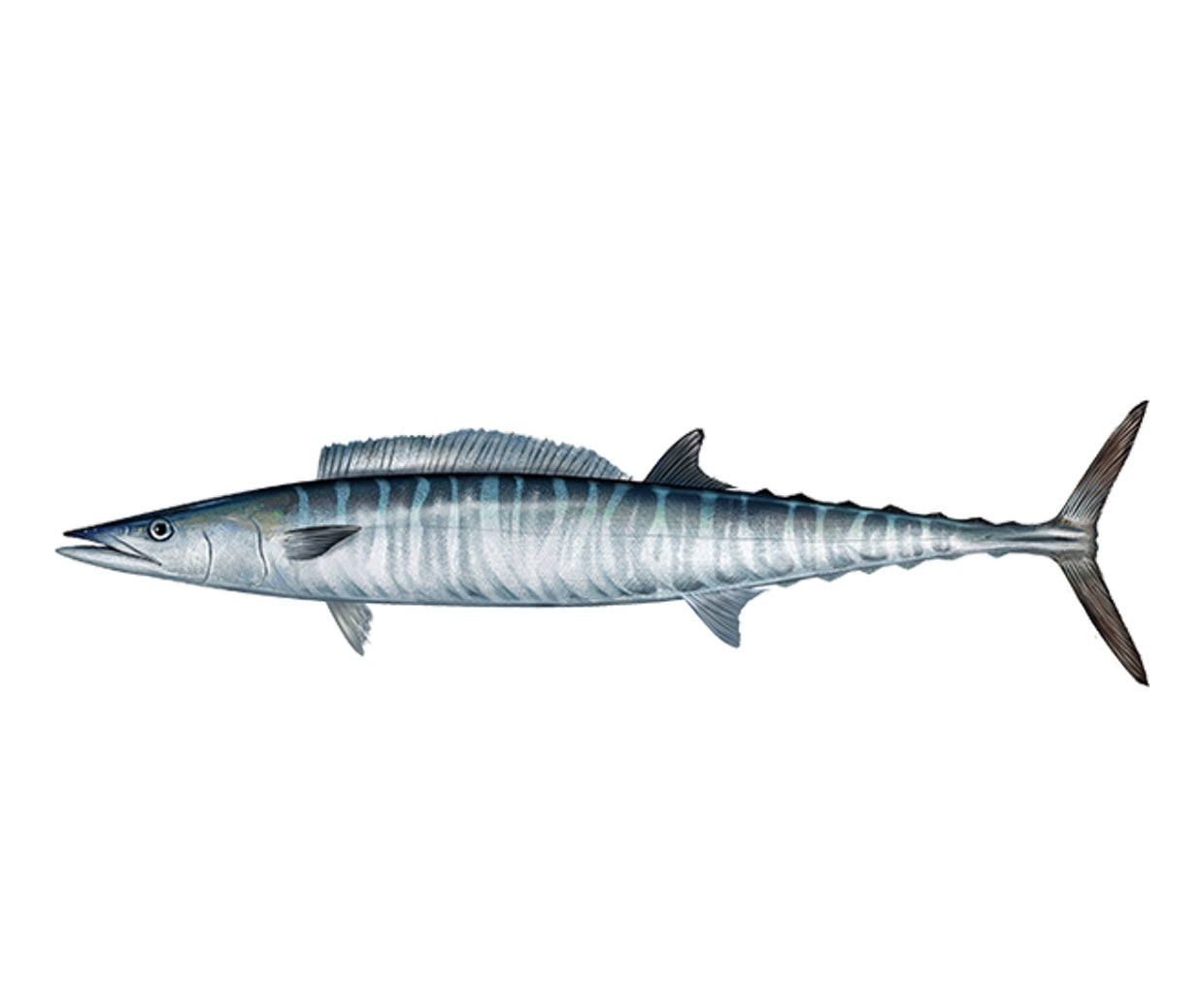
Spearfishing Wahoo - How to Hunt Series
Spearfishing Wahoo - How to Hunt Series
Wahoo can be one of trickiest species to hunt, even for experienced hunters. There are a few ongoing debates on factors that effect how these fish act. Some people claim the trick to knowing where they'll be is the moon phase. Other people say the telltale sign is water temperature, and yet others say it's about water temperature. Most likely, it is a combination of all of these factors and more, but the best advice you can take is listen to the locals. If you are traveling and using a guide, definitely take the advice of your guide.
Species Information
Wahoo is one of the fastest and best tasting fish in the ocean. They can accelerate from resting to 60 miles per hour in a single body length. They have a missile shaped, tubular body and can vary in color from silvery grey to silver with deep blue vertical stripes. These fish are able to change their color patterns on their own, and tend to be in small groups or in solitary groups (although, if you see one solo, chances are it's a big one). Strong currents and deep structure are the most active sites to find these fish. Wahoo usually stay near the surface, so you don’t need to be a deep diver to target them. If you can dive to 15-40 feet (6-12 meters) you can target wahoo extremely effectively.
Moon Phase & Water Temperature for Wahoo
Bluewater spearfishing enthusiasts have had a longstanding debate on the conditions required to hunt bluewater species. The biggest conditions that people think wahoo behavior are moon phase and water temperature. The general consensus is that the week leading up to a full moon is the best moon phase to target these fish. Water temperature is best between 68-72 degrees Fahrenheit (20-23 degrees Celsius). Another factor is water clarity: wahoo tend to prefer clean, gin-clear water. If you can overlap clear water, moon phase, and water temperature over a piece of tall deep structure, then your chances for a wahoo are high.
Flashers and Chum
You can help improve your odds by using things to attract the fish in. Flashers tend to be more effective than chum with wahoo. This is because you don't sit still over structure for wahoo, and instead do long drifts over structure or along defined currents. If you are determined to use chum, it is best to shoot a smaller fish and tie it off on your flasher float. From there, use your dive knife and cut chunks of the fish up for chum as you drift.
For flashers, there are a couple different options. A group of divers should use a flasher and flasher float set to depth to get the attention of fish at depth. Once the wahoo have their attention on your flasher you can use a throw flasher to give them something new to focus on. They are voracious predators of bait fish and frequently will dart in front of you to try and beat you to a potential meal. If you present them with an opportunity for a meal you can aim where they are going to be and have the upper hand. Make sure when you use a throw flasher, you don't swim toward the fish but instead swim towards the flasher. If you swim toward the fish, you will probably spook it.
Equipment for Wahoo
Putting a shaft in the fish is only half the challenge with landing a wahoo. Wahoo have extremely soft flesh, so you need some specific equipment and good shot placement to increase your odds of getting your fish. You need a slip-tip with spectra line, a floatline with stretch, and a small to medium hard float. These combine to give the least amount of back pressure and the most amount of play for your wahoo to not tear out, which gives you the best chance of landing your wahoo.You also need to shoot them in the right spot. If you aren’t going to shoot them in the spine and stone them you need to shoot them in the tail. It's counterintuitive, but if you shoot the wahoo in the back 1/3 of the fish you have the best chance to land them. Wahoo have a ton of intersecting bones in their tails that provide a great holding shot for the slip-tip. Anther benefit of shooting them in the tail is that it prevents them from being able to accelerate quite like they normally do.
